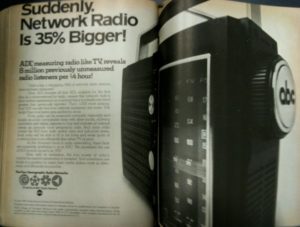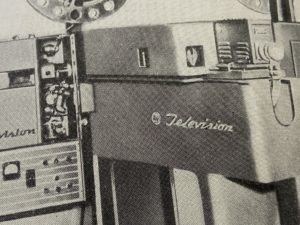 We ran across a recent post on the future of AM radio that set out some ideas on keeping the format viable. While the idea of AM radio still lives, and is relied upon by millions each day, the audience is increasingly aging. Furthermore, the band has seen more interference in recent decades. It had a big revival in the late 1980s with talk radio, and a 1960s and 1970s revival with top 40. There is no reason why AM can’t reinvent itself again.
We ran across a recent post on the future of AM radio that set out some ideas on keeping the format viable. While the idea of AM radio still lives, and is relied upon by millions each day, the audience is increasingly aging. Furthermore, the band has seen more interference in recent decades. It had a big revival in the late 1980s with talk radio, and a 1960s and 1970s revival with top 40. There is no reason why AM can’t reinvent itself again.
The Federal Communications Commission has rejected the proposal, but we still think it’s an intriguing idea. Let AM radio stations across the United States boost their signal power by a factor of ten. We found this on the Ars Technica blog.
“The time to get the static out of AM radio is past due,” wrote Richard F. Arsenault of New Jersey to the Commission in April. “We have watched the AM service degrade due to the increase in interference for too long. We must return AM radio service to comparable and usable coverage levels of the past.”
So over two decades the number of AM stations has dropped by more than 200, while the number of FM signals has almost doubled.
AM radio is still a viable format. It’s cheap to produce, and low-tech; click on the Flavoradio image above to see our story on these Radio Shack gems, collected by Phil MacArthur.
We need that redundancy in our telecom systems. We can’t have all our emergency systems dependent on the web, even though many AM stations now broadcast over the web. In emergencies and power outages, AM is the perfect alternative. Furthermore, it makes no sense to clog up valuable bandwidth with local radio, which is much more cheaply sent over the air.
Mind you, it’s not so important that THIS idea for AM get pushed through. It’s merely that AM is a useful format, not only in times of emergency, and we need different types of media systems to keep some sort of freedom in our system.
Local AM radio stations are some of the most potent regional brand names around. While diminished from the 1970s, when they had large news teams, they still command enormous respect and audience, and form a critical part of local communities. The FCC needs to protect that. And radio companies such as CBS and Clear Channel need to continue to make a case to the FCC that the format is valid.









I filed the Petition to increase the power of AM stations in order to overcome the increasing interference problems. I must state that the FCC’s action to dismiss the Petition was a disappointment. AM radio is still has viable stations and they need all the help they can get to remain competitive. I also filed another Petition to increase the power of AM stations starting at 5AM instead of the current 6AM regulation in order to allow AM operators the opportunity to compete with other broadcast media during early morning hours. The FCC opened that Petition up for Public Comment but has failed to act since. Full copies of both Petitions and relevant FCC links are available for review if interested at the website listed below. I’d be happy to discuss these matters and other ideas you might have.
Richard F. Arsenault, Consultant
radioservices@ieee.org
http://www.radio-broadcast-engineer.com